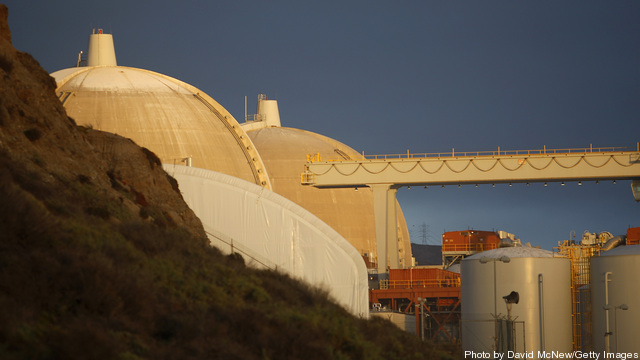 The San Onofre Nuclear Generating Station is seen from the beach along San Onofre State Beach on March 15, 2012 south of San Clemente, California.
The San Onofre Nuclear Generating Station is seen from the beach along San Onofre State Beach on March 15, 2012 south of San Clemente, California.
The head of the Nuclear Energy Institute yesterday said he was optimistic that California’s San Onofore nuclear plant would again start producing electricity and denied that the US industry was troubled by high costs and safety concerns after Fukushima. Keep reading →









